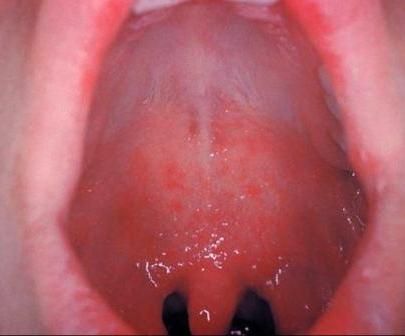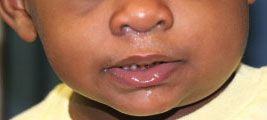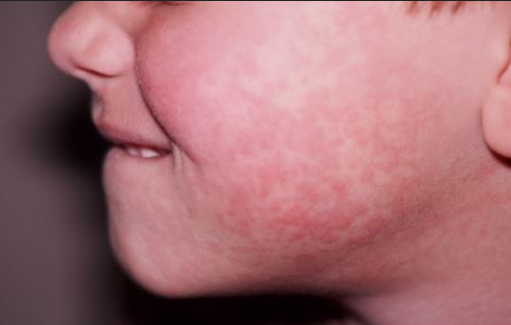- CDC
- Heart Failure
- Cardiovascular Clinical Consult
- Adult Immunization
- Hepatic Disease
- Rare Disorders
- Pediatric Immunization
- Implementing The Topcon Ocular Telehealth Platform
- Weight Management
- Monkeypox
- Guidelines
- Men's Health
- Psychiatry
- Allergy
- Nutrition
- Women's Health
- Cardiology
- Substance Use
- Pediatrics
- Kidney Disease
- Genetics
- Complimentary & Alternative Medicine
- Dermatology
- Endocrinology
- Oral Medicine
- Otorhinolaryngologic Diseases
- Pain
- Gastrointestinal Disorders
- Geriatrics
- Infection
- Musculoskeletal Disorders
- Obesity
- Rheumatology
- Technology
- Cancer
- Nephrology
- Anemia
- Neurology
- Pulmonology
A Vaccine Is a Shot at Prevention: A Photo Essay
Hepatitis, measles, smallpox, polio, mumps, influenza, Fifth disease-a close look at the value of vaccination past, present, and future.

Case 1:
Vaccination against infectious diseases has saved millions of lives. The recurrent threat of influenza pandemics and the prevalence of global HIV infections underscore the need for better-designed, more effective vaccines.
Hepatitis B surface antigen, rod-shaped and spherical viral particles measuring 20 nm, was detected in the sera of persons with the Australia agent and later used for the preparation of the hepatitis vaccine.
This vaccine was hugely effective in hundreds of millions of people in Asia and Africa and significantly decreased the rate of carriers of the disease and the incidence of liver cancer, a possible sequel to viral hepatitis.
In the United States, clinicians were reluctant to use a vaccine prepared from the sera of infected persons. The vaccine was withdrawn from the market and, in 1988, was replaced by the hepatitis B vaccine prepared by the expression of the viral coat proteins in baker’s yeast.
Article and image courtesy of Dov L. Boros, PhD.
NEXT CASE »
For the discussion, click here.

Case 2:
As of mid-April, 2014, 129 cases of measles had occurred in 13 outbreaks in 13 states. In most cases, the person chose not to be immunized or was too young to receive the vaccine.
The reappearance of measles is disheartening-the endemic disease was eliminated in the United States in 2000 and many young practicing US clinicians have never seen a case.
Here are the signs and symptoms of the measles in a classic case:
1. Fever and malaise appear first.
2. Coryza, conjunctivitis, and cough appear second, usually within 24 hours of the onset of fever.
3. Koplik spots appear first on the buccal mucosal about a day after the coryza and cough and 2 days after the onset of fever.
4. The rash first appears on the hairline of the face about 3 to 4 days after the onset of the fever.
5. The rash moves downward until it reaches the feet about 2 to 3 days after starting on the head.
Article by Terry Brenneman, MD. Image courtesy of CDC.
NEXT CASE »
For the discussion, click here.

Case 3:
A 36-year-old Marine had clusters of localized papular lesions on the right forearm, but no systemic symptoms, for a week. He had been inoculated 20 days earlier in the United States with the vaccinia virus (smallpox vaccine) to the ipsilateral shoulder just before deployment. He had no history of eczema, psoriasis, or drug allergies.
Three patches of nonpustular folliculitis were observed on the patient’s right forearm. However, the inoculation site on the right shoulder was healing well. No treatment was required. The folliculitis healed without scarring 10 days later.
Regional folliculitis has been reported in adults who received the smallpox vaccine for the first time at rates as high as 7.4%.
Case and photo courtesy of Timothy R. Oeltmann, MD.
NEXT CASE »
For the discussion, click here.

Case 4:
By 1952, Jonas Salk, MD, and his colleagues developed a vaccine against the 3 strains of the poliovirus, and it was declared safe and effective. About 2 million children were vaccinated in the United States, Canada, and Finland.
In 1960, Bernice Eddy and a colleague at the NIH discovered a mouse virus that they called polyomavirus. This electron microscope shows virons of the simian vacuolating virus 40 (SV40) of the polyomavirus group. A paramyxovirus measles virus is also present.
Scientists concluded that the SV40 contaminant in the polio vaccine could infect humans. The FDA ordered that it must be free of SV40.
A 1998 National Cancer Institute study showed no elevated cancer incidence in persons who had received the SV40-contaminated polio vaccine. Researchers in Sweden came to the same conclusion. Routine vaccination has resulted in almost complete eradication of polio worldwide.
Article provided by Dov L. Boros, PhD. Image courtesy of CDC/E.L. Palmer.
NEXT CASE »
For the discussion, click here.

Case 5:
A 2-year-old girl was noted to have left-sided facial swelling on awakening in the morning and was brought to the ED. She had had no fever, trauma to the area, pain, or difficulty in swallowing. Her immunizations were up-to-date; she had received both doses of the measles, mumps, and rubella (MMR) vaccine about 6 months earlier. There were no sick contacts.
Serum amylase levels were elevated, confirming the clinical diagnosis of acute parotiditis-swelling and inflammation of one or both parotid glands. Acute parotiditis in children most often has a viral origin.
Mumps virus is the most common cause of parotiditis and should always be considered in children regardless of immunization status. Mumps, or epidemic parotiditis, is asymptomatic in about one-third of patients.
MMR-vaccinated children in whom mumps develops can have negative IgM titers, according to the CDC. Children with mumps who have not received the MMR vaccine can be vaccinated to prevent future infection.
NEXT CASE »
For the discussion, click here.

Case 6:
A 48-year-old man was admitted with a sore throat, subjective fever, and cough. Two days before admission, he had dysphagia, began to drool, and felt like he was choking. An x-ray film of the neck showed soft tissue swelling at the level of the epiglottis and a thumbprint sign (arrow), confirming the diagnosis of epiglottitis.
Epiglottitis has been rare since 1991, when the Haemophilus influenzae type B (Hib) vaccine was first recommended for children.
The incidence of epiglottitis in adults is on the rise. Before the Hib vaccine, 0.22 to 1 per 100,000 adults were affected. The rate was reported to increase to 0.88 per 100,000 between 1991 and 1995 and to 3.1 per 100,000 between 1996 and 2000.
Epiglottitis in adults has been associated with comorbid conditions, such as hypertension and diabetes mellitus.
Case and image provided by Riad El Fakih, MD and Reginald Fears, MD.
NEXT CASE »
For the discussion, click here.

Case 7:
A 5-year-old boy presented with an asymptomatic lacy, reticular rash of 4-days’ duration. It began with the appearance of a solid red rash on his cheeks, and then the lacy rash covered his entire body and the solid rash also became lacy.
The diagnosis was fifth disease. This dermatosis gets its name for being the fifth disease with a pink rash to be described after roseola, measles, rubella, and scarlet fever. The causative agent, human parvovirus B19, is infectious only in humans.
Fifth disease is spread by respiratory secretions and is highly contagious. It begins with a prodromal phase of nonspecific symptoms, sometimes a mild fever, malaise, myalgias, and headache. This prodromal phase is the contagious phase. When the rash appears-which may be atypical-the child is no longer contagious.
There is no vaccine for fifth disease and no real way to prevent spreading the virus.
Case and image courtesy of Robert P. Blereau, MD.
